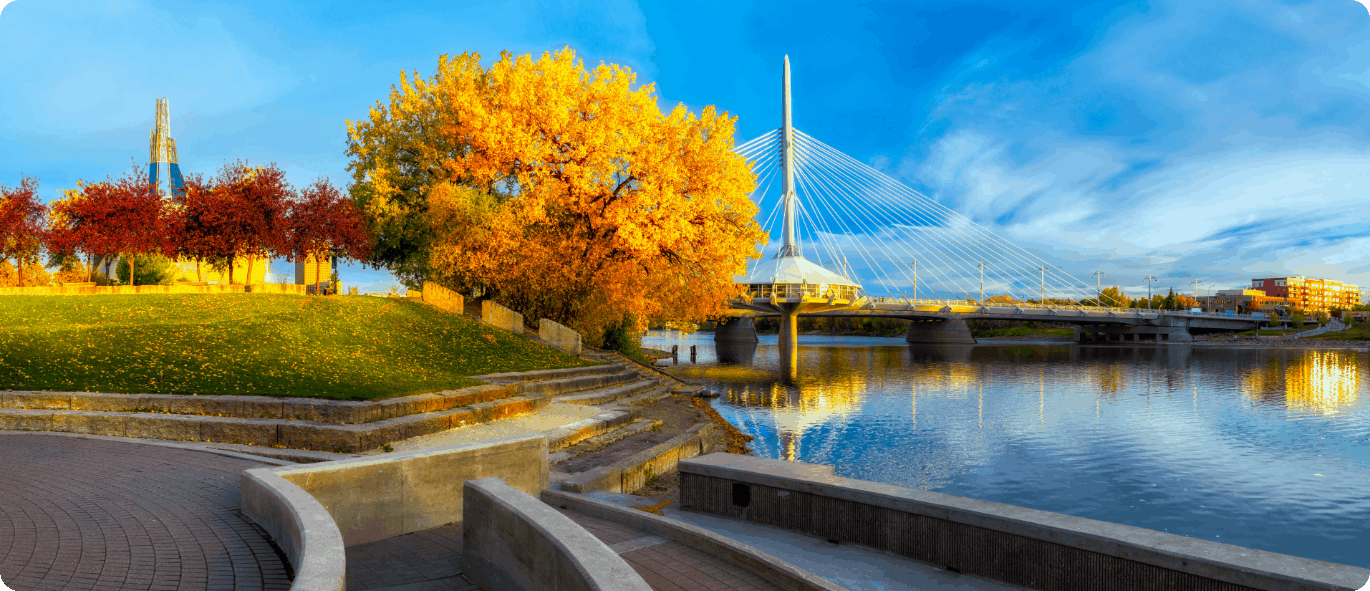Manitoba Immigration
If you enjoy your independence, love nature and want to “get away from it all,” then Manitoba immigration may be a choice for you after being issued a Permanent Resident Visa for Canada!
Manitoba, with a population of about 1.38 million people (2021) is a province located on the Canadian prairie between the provinces of Saskatchewan (on the west) and Ontario (on the east); south of Northwest Territories and Nunavut Territory; and north of Minnesota and North Dakota in the United States. Manitoba is also bordered on the northeast by Hudson Bay.
With its location in the northern Great Plains region of North America, Manitoba basically has a flat, grassy terrain that is well-suited for agriculture (particularly in the southern section of the province).
Manitoba also has beautiful pine forests and spectacular national parks.
Like neighboring Ontario, Manitoba has thousands of lakes (over 100,000), providing endless opportunities for sailing, water skiing, fishing, camping, hiking and picnicking. Lake Manitoba and Lake Winnipeg are two of the larger lakes in Manitoba. Lake Winnipeg has the distinction of being the 10th largest fresh-water lake in the world.
Polar bears are common in the northern part of Manitoba (the town of Churchill is known as the “polar bear capital of the world”), plus the province has large numbers of moose, wolves, deer, and more than 140 bird species.
If you travel to the town of Churchill to take pictures of the polar bears, keep in mind that you can also photograph the beautiful Aurora Borealis (“Northern Lights”) approximately 300 nights each year while you’re there.
Thus, many nature lovers who treasure the tranquility of the “Great Outdoors” decide on Manitoba immigration over settling in other provinces after receiving their Permanent Resident Visa for Canada.

Winnipeg
The provincial capital of Manitoba (and its largest city) is Winnipeg, which has 705,244 residents living within the city limits and a metro area population of 778,489 (2016).
The next largest cities have relatively low populations. For example, the second most populace city in Manitoba, Brandon, only has 46,061 residents; the third largest city, Steinbach, 13,524; and so forth.
Thus, if you select Manitoba immigration after being granted a Permanent Resident Visa for Canada, you can choose between “life in the big city” (i.e., Winnipeg) and a more rural lifestyle in a small town or out in the country.
Winnipeg has a variety of things to do. There are several festivals held in the city, such as the Winnipeg Jazz Festival and Winnipeg Folk Festival. If you enjoy NHL hockey, you can cheer on the Winnipeg Jets. Cultural events include the symphony, ballet and opera. Winnipeg has several museums, including the Western Canada Aviation Museum, Winnipeg Art Gallery, Winnipeg Planetarium, Canadian Museum for Human Rights, and the Manitoba Museum. Other points of interest in Winnipeg include: Assiniboine Park and Zoo; Royal Canadian Mint; and the 20-block Exchange District National Historic Site.
Winnipeg is also a good place to find work in Canada.
Economy
A major attraction of this Canadian prairie province for many people who make Canadian immigration and are issued a Permanent Resident Visa for Canada is that there are economic opportunities in Manitoba without a lot of the big city hassles.
Manitoba has maintained one of the strongest economies and lowest unemployment rates in Canada over the past few years.
Many people already living in Canada have relocated to Manitoba, because of the many job opportunities there and the low cost living.
The top business sectors in Manitoba include manufacturing, trade, agriculture, energy, retail, finance, insurance, real estate, aerospace, transportation and logistics, food processing, mining, forestry, and tourism.
Therefore, if you are looking for jobs in Canada, the province of Manitoba is the place to be!
Immigrate to Canada for a Beautiful Future!
DISCLAIMER: This guide is not and shall not be considered as professional or expert advice.
